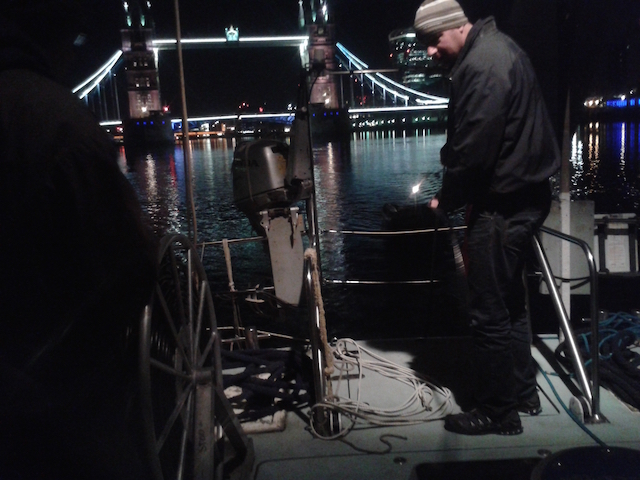Sitting on a set of concrete steps in Wapping, close to midnight on a Sunday, it occurs to us that this may be the closest we've ever got to silence so close to Central London. Sadly, silence is not what we want to hear tonight.
We've been invited on board Song of the Whale, Marine Conservation Research's vessel, to take part in a night research trip. Our purpose? Porpoises. The MCR, along with the Zoological Society of London and the International Fund for Animal Welfare is conducting the first dedicated study of harbour porpoises in the tidal Thames, with a second one taking place in late summer 2015.
Unlike their dolphin cousins, porpoises don't often jump out of the water (an action confusingly called "porpoising"), so spotting them is not easy, explains Dr Oliver Boisseau, MCR's Senior Research Scientist. Instead, sonar equipment is used to record porpoise clicks, giving an indication of the presence of porpoises in certain areas. These recordings are then analysed using specialist computer programmes, which highlight the noises they are likely to make.
What's the point of the survey? Until a few years ago, it wasn't known for sure whether porpoises lived in the Thames at all — and their presence was only brought to light when people reported sightings. Even now, people are surprised when they learn that these marine mammals live in the overlooked waters of the Thames (don't believe us? Take a look at this ZSL map, which records 230 sightings of them since 2004, along with seals and dolphins). As well as getting an idea of how many porpoises are inhabiting the Thames, the project wants to let people know they are there.
"The best outcome of the survey would be to raise awareness, get people interested, get people involved," says Oliver. And by getting involved, he means reporting any sightings of porpoises, dolphins and seals in and around the Thames to ZSL. It's easy to do, just add your sighting to the map, or report it on Twitter, using #inthethames. The MCR team have now left the Thames estuary to continue their study of the entire UK coastline (follow their progress here), but they can continue monitoring Thames porpoises if they know the locations and frequencies of sightings.
Want to know more about the Thames porpoise survey? Listen to our podcast, where N Quentin Woolf meets the Marine Conservation Research team, and hears about what they're doing and why.
Take a look at what else, besides porpoises, lives in the Thames — you may be surprised.









